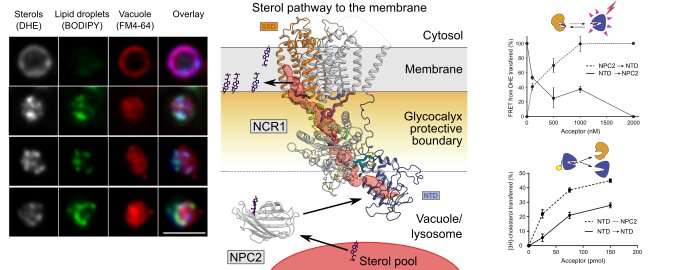
Most people have heard of “cholesterol levels” and the dangers of high blood cholesterol, which is one of the main causes of cardiovascular disease. But besides the harmful side effects of high cholesterol, cholesterol is an essential component of all cells and fundamental to a host of important functions of the body. Hormones like estrogen and testosterone are made from cholesterol, for example.
It has been known for a long time that cholesterol is transported around the body in the blood as small particles consisting of fat and protein. In the body’s cells, these particles are broken down and cholesterol is released and integrated as part of the cell. Although this process is essential, not just for humans, but for all animals and plants, surprisingly little is known about how cholesterol is actually incorporated into the cells after the breakdown of these particles.
In recent years, interest in how cholesterol is integrated and incorporated—and not least how this process is regulated—has grown tremendously. This is partly due the huge pharmaceutical potential in regulating this process, as shown with blockbuster drugs such as Zetia, which regulate cholesterol uptake from food. In addition, it has been shown that many viruses, including Ebola, uses the same process to infect cells.
During the past five years, researchers from Aarhus University have collaborated with researchers from the University of Southern Denmark and the University of Leeds to investigate how cholesterol is incorporated into cells, using biophysical and structural biological methods. The results have led to a groundbreaking insight into the process and to a new model for how cholesterol is integrated and incorporated that fundamentally changes our prior understanding of the process.
Source: Read Full Article
